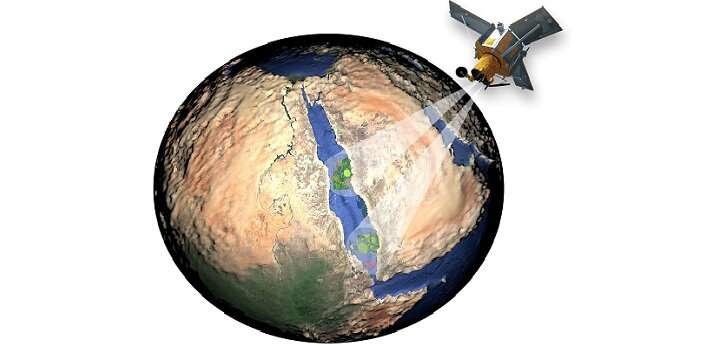Remote sensing of toxic algal blooms

Harmful algal blooms in the Red Sea could be detected from satellite images using a method developed at KAUST. This remote sensing technique may eventually lead to a real-time monitoring system to help maintain the vital economic and ecological resources of the Red Sea.
Monitoring harmful blooms using traditional in-situ methods is not only costly and labor intensive but often requires collaboration across borders. Remote sensing methods based on satellite data are a cost-effective approach that also offers the possibility of continuous monitoring and straightforward observation of the spatial and temporal extent of the bloom. However, appropriate analysis techniques are needed to reveal the algal blooms in satellite data.
"So far, no satellite algorithms have been developed to monitor harmful algal blooms in the Red Sea region," says Ibrahim Hoteit's Ph.D. student Rajadurai A. Gokul. Together with colleagues at KAUST, as well as in Yemen and the UK, he extended existing methods to enable imagery from NASA's MODIS-Aqua satellite to be used to detect harmful algal blooms in the Red Sea.
The team used satellite images of several algal blooms as training data to adjust their analysis model. They then validated the model by using it to analyze data collected during other algal blooms. The model successfully detected the algal blooms in the validation data, and predictions of their spatial extent and the chlorophyll A concentration matched observations made in the field.
A significant challenge for the team was to develop an atmospheric-correction algorithm to cope with the frequent dust storms and aerosols over the Red Sea that come from the surrounding deserts. With this correction, they were able to retrieve more accurate ocean-color data and reflectance measurements at different wavelengths, which were used to detect algal blooms and determine which species were involved.
The team is now using this approach to analyze historical satellite data to reconstruct and study previous algal blooms in order to understand their seasonality and annual variability. Further work will be needed to enable the model to detect algal species that weren't included in this research.
"Our results suggest real potential for developing a real-time remote sensing algorithm to detect harmful algal bloom events in the Red Sea and issue timely alerts for emergency management," says Gokul. With further refinement, this will serve as a valuable resource in efforts to sustainably manage the Red Sea coastal zone and its role in the regional economy through aquaculture, fisheries and tourism.
More information: Elamurugu Alias Gokul et al, Remotely sensing harmful algal blooms in the Red Sea, PLOS ONE (2019). DOI: 10.1371/journal.pone.0215463
Journal information: PLoS ONE




















